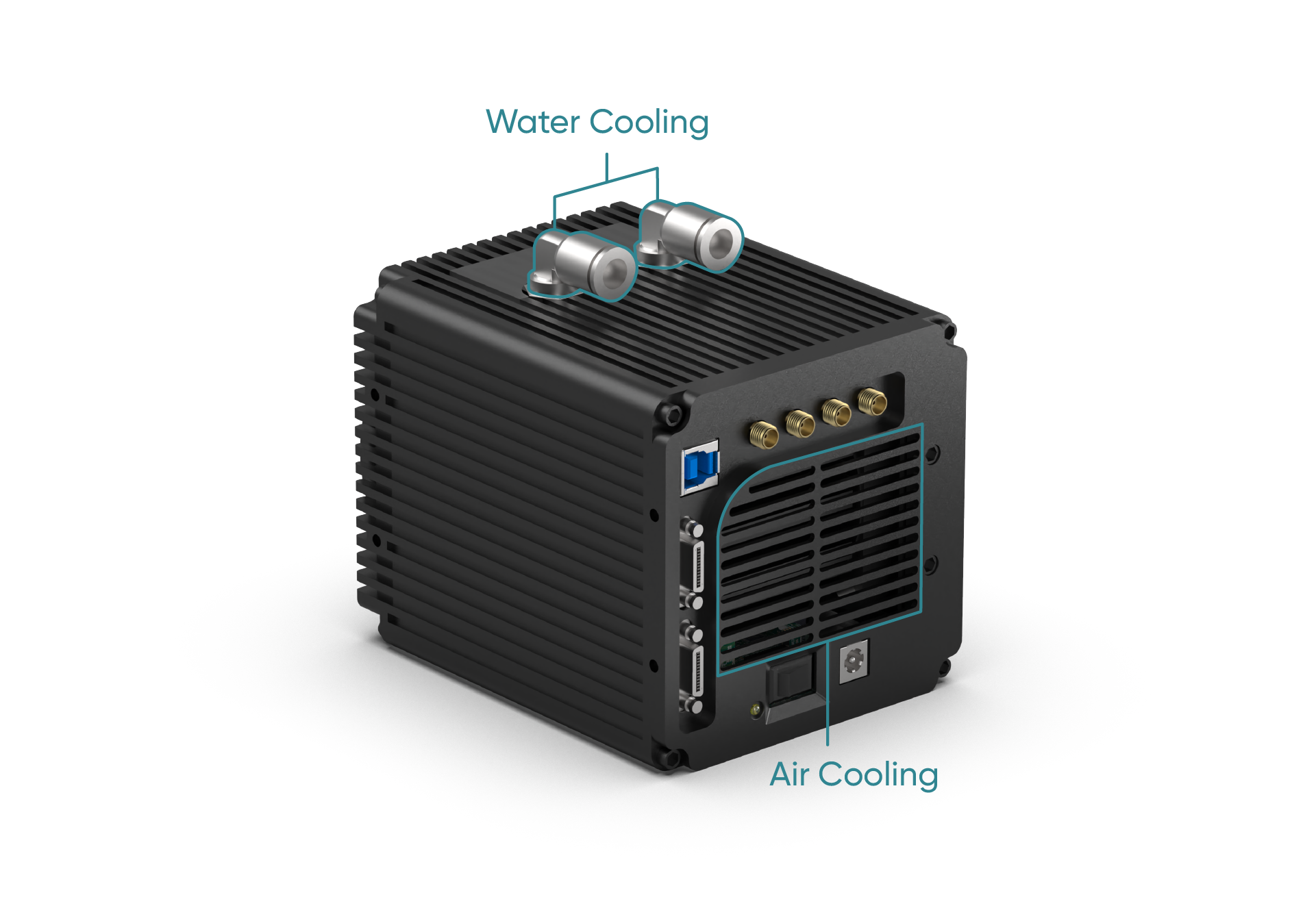Many scientific cameras use sensor cooling to reduce the influence of temperature dependent thermal ‘dark current noise’[link] and hot pixels. Some cameras offer multiple cooling methods for how the excess heat is removed, whereas for some cameras and imaging applications, no cooling is required.
The camera sensor itself is cooled often to sub-zero temperatures by a Peltier device, which moves the heat to the camera’s heat removal system. ‘Air’ or ‘Forced air’ cooling is the most common heat removal method, where a fan uses airflow to exchange this excess heat with the ambient air. Alternatively, some cameras also offer the ability to use a liquid circulation system to remove the heat to a reservoir or cooled bath. This can offer advantages in some situations, in exchange for practicality and cost considerations.

Do I need liquid cooling?
For cooled cameras, air cooling is typically the most convenient option providing adequate airflow is possible around the camera, and the room’s ambient temperature is not too high. This requires no additional parts or installation, and there is no risk of spills or leaks. But there are two main situations in which liquid cooling may be essential.
Firstly, for some cameras, liquid cooling can support a lower sensor temperature, which then provides lower dark current noise. If long exposure times of tens of seconds to minutes are required with these cameras, the reduced noise can offer significant signal-to-noise ratio and image quality improvements.
Secondly, while every effort is made during manufacture to minimize vibration from a camera’s internal fan, occasionally for very highly sensitive equipment this can be problematic. In this case, liquid cooling enables vibration-free camera installation, with the liquid circulation system then able to be separated from sensitive equipment.

 22/05/20
22/05/20







